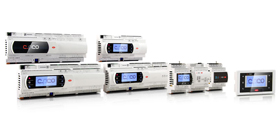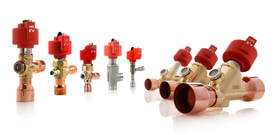Efficiency in refrigerant circuits
The efficiency of a refrigeration or air-conditioning system depends only partly on the efficiency of the individual components.
This means that correct sizing and design of high-performance heat exchangers or efficient compressors are not enough on their own to achieve high overall system efficiency.
What on the other hand significantly helps increase efficiency is the combined operating mode of the components, which often does not simply refer to an individual refrigeration unit but rather the installation as a whole.
Consequently, one fundamental aspect is the control system, in other words the set of electromechanical and electronic components that acquire information from the refrigerant circuits via various types of sensors, process this using logic of varying complexity, often implemented by a software application, and then managing activation or operation of the various components.
For example, the control system on a split air-conditioner in the home uses an electronic board that measures room temperature using one or more probes, and, based on the data sent from the remote control, implements the logic programmed into the board’s software to activate the fans at different speeds, the compressor and the louvers and thus reach the desired room temperature and maximum comfort.
To have a clearer picture, it is worth shedding light on how energy efficiency of a refrigeration circuit is calculated, therefore, on the different concepts of rated and seasonal efficiency.
Do you need more informations? KNOWLEDGE CENTER
KNOWLEDGE CENTER





